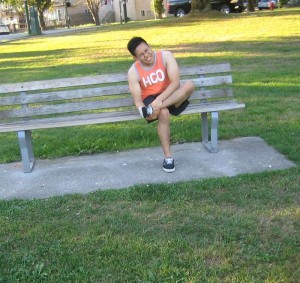Fact Checked
Achilles tendinitis is defined as an overuse injury involving the Achilles tendon. The condition typically affects runners who abruptly increase the duration or intensity of the activity.
What are the signs?
The pain or discomfort linked with Achilles tendinitis essentially starts as a minor ache in the rear part of the leg or above the heel after running or other physical activities. Severe pain can occur after prolonged running, sprinting or stair climbing.
Other signs include the following:
- Tenderness of the affected area
The pain or discomfort linked with Achilles tendinitis essentially starts as a minor ache in the rear part of the leg or above the heel after running or other physical activities. - Stiffness or rigidity in the morning that improves with mild activity
Management of Achilles tendinitis
Achilles tendinitis generally settles with self-care measures. In case the symptoms are serious or persistent, the doctor might suggest other measures.
- Medications – if over-the-counter pain medications are not effective, stronger variants are prescribed to lessen the pain and inflammation
- Physical therapy – during physical therapy, it includes treatment options such as strengthening and stretching exercises and orthotic devices.
- Surgery – in case the conservative measures fail to work for several months or the tendon is torn, the doctor might recommend surgical intervention to fix the Achilles tendon.
Some of the self-care measures for Achilles tendinitis include:
- Rest – the individual must avoid exercise for several days or switch to an activity that does not strain on the Achilles tendon. Crutches or a walking boot might be used in severe cases.
- Application of ice – apply an ice pack on the tendon for 15 minutes after exercise or if pain is present to reduce the swelling and discomfort
- Compression – an elastic bandage can lessen the swelling and limit movement of the tendon as it heals
- Elevation – raise the affected foot above the level of the heart to lessen the swelling. It is best to sleep with the affected foot raise at night.

